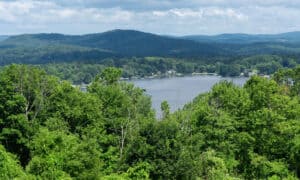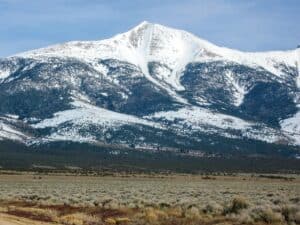Mountains are mighty landforms that rise on every continent around the world. They are some of the most stunning and breathtaking sights with rugged peaks and jaw-dropping ridges. Mountain ranges, however, are a series of mountains that are connected by high ground and arranged close together or in a line. Mountain ranges can vary in size, with some spanning the length of entire countries. But just how big are they? Join us as we discover the largest mountain range on earth and everything you need to know about it!
How are Mountains Formed?
Mountains are formed as a result of tectonic activity. The earth is covered in large tectonic plates. These make up the earth’s continental and oceanic crust (also known as the lithosphere). They are made from huge pieces of solid rock, and these plates move around, rub against, and slide over each other. This is because they sit on top of a layer of molten rock which is also known as the asthenosphere. Convection currents between the two cause the tectonic plates to move.
In many cases, the plates simply smash against each other, forcing the rocks that form part of the crust upwards to form mountains. In other cases, the heavier oceanic plates slide underneath the lighter, less dense continental plates. The continental plate then sits on top of this subduction zone, and in the process, the rocks from the continental plate are forced upwards, again creating mountains.
Quite often, mountains can be volcanic too. In this case, the molten rock erupts upwards through the earth’s crust. The process of erupting and cooling means that it piles up on itself, creating a volcanic mountain.
The Largest Mountain Range on Earth
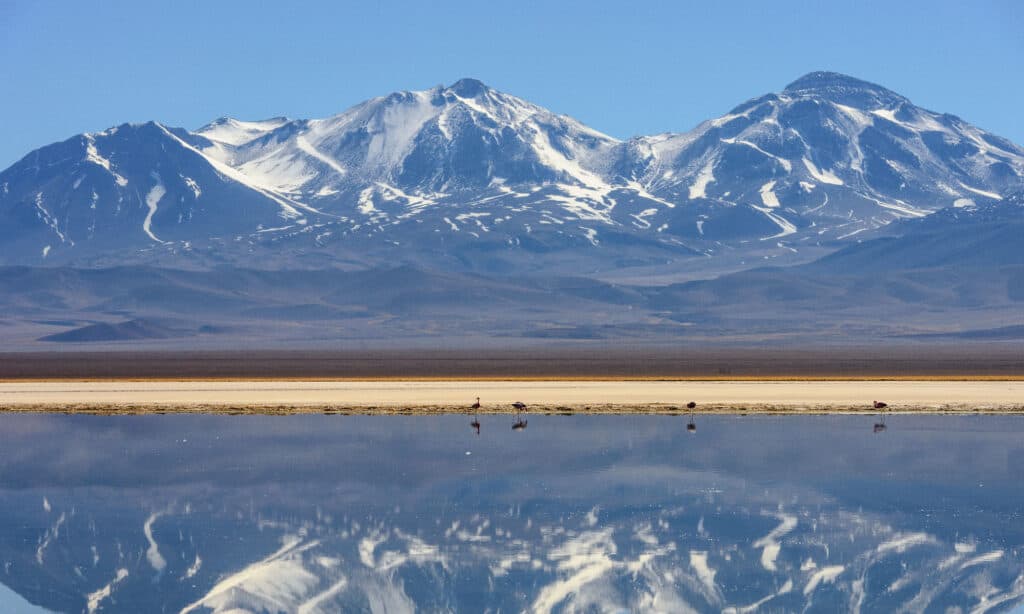
The Andes mountain range is an incredible 5,530 miles long!
©DaryaU/Shutterstock.com
The largest mountain range on earth in terms of length is the Andes mountain range which is an incredible 5,530 miles long. They also range from 124 miles to 435 miles at their widest point. The Andes stretches north to south in South America and spans seven countries – Argentina, Bolivia, Chile, Colombia, Ecuador, Peru, and Venezuela. The Andes mountains were formed due to tectonic activity between the Nazca (oceanic) and South American (continental) plates approximately 65 million years ago.
Although not the tallest mountain in the world (that title goes to the infamous Mount Everest), the highest mountain in the Andes is Mount Aconcagua which is still an impressive 22,838 feet high. The Andes is also home to the highest volcano in the world – Ojos del Salado – which is 22,615 feet high. The Andes mountains also form part of the American Cordillera. The American Cordillera is an almost continuous chain of mountain ranges. It spreads right across the western region of North America, Central America, South America, and Antarctica.
As the Andes mountain range is so large, it is split into three divisions. These divisions are known as Dry Andes, Tropical Andes, and Wet Andes based on their climates. The Andes is also home to many plateaus, which are high, flat areas. The best-known plateau in the Andes is the Altiplano plateau which is located in the center of the Andes. This is the second highest plateau after the Tibetan plateau which occurs in the Himalayas.
Flora and Fauna
As the Andes mountain range is so large, it is unsurprising that there is a wide range of habitats across them as well as a vast amount of animals that call these stunning mountains their home.
As we’ve already mentioned, the Andes are separated into three regions based on their climate, and this affects their habitats. The areas of the mountains which stretch through Argentina, Chile, and Peru tend to be mainly dry slopes covered by deciduous forests and shrubland. The warm and wet regions are home to tropical forests, while the dry region encompasses the Atacama desert. The Atacama desert is the driest true desert in the world and receives less than 1mm of rain annually. It is so dry, and conditions are so extreme that very few animals can survive there. Only those who have adapted to the dry conditions can survive there, with birds and insects being the most prevalent. However, some areas of the Atacama are so harsh that they are entirely barren of life.
Wildlife in the Andes
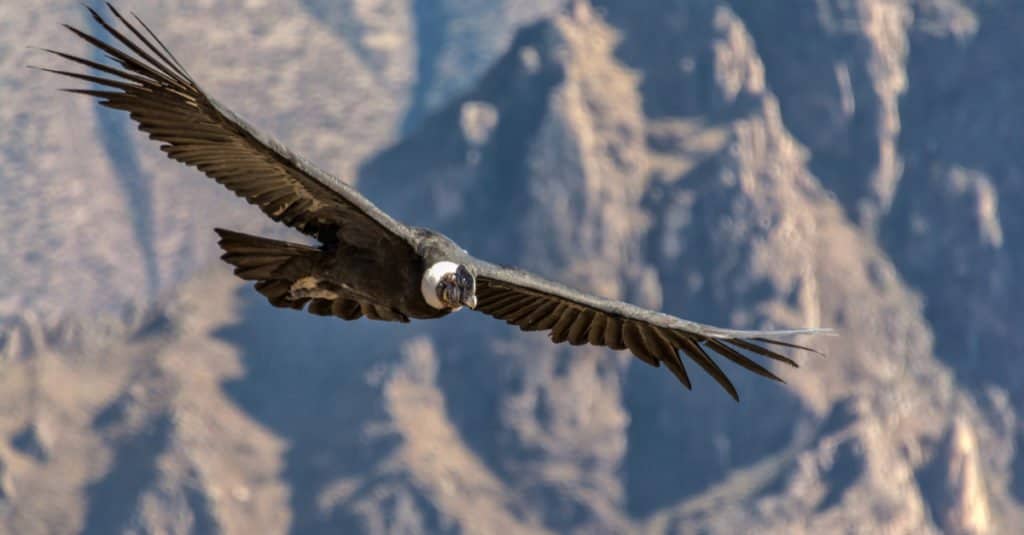
One of the most iconic animals in the Andes is the Andean condor.
©Gus Martinie/Shutterstock.com
There are approximately 3,700 different species of animals in the Andes mountains, of which around 75% of them are endemic. This includes around 1,700 species of birds, 600 mammals, and 600 reptiles. One of the most popular animals which come from the Andes is actually the guinea pig. Animals such as alpacas and llamas are important to the survival of the people who live in the mountains. This is because they are used as pack animals and for meat and wool. Of the wild animals, cougars regularly stalk the Altiplano plateau, along with foxes. There are also deer, yellow-tailed woolly monkeys, guanacos, mountain tapirs, and snakes, to name a few.
Although the Andes is home to a diverse range of animals, it is also home to many which are endangered too. One of these is the spectacled bear which is the only surviving bear that is native to South America. Spectacled bears are a vulnerable species and live almost entirely in the Andes. They live in a variety of habitats in the mountains but usually not below 6,000 feet.
Although vulnerable, one of the most iconic animals in the Andes is the Andean condor which has a rich history in the folklore of the mountains. Andean condors are members of the vulture family. They are one of the largest flying birds in the world with a massive 10ft 10in wingspan. Andean condors generally nest on rocky ledges at elevations up to 16,000 feet.
Threats to the Andes
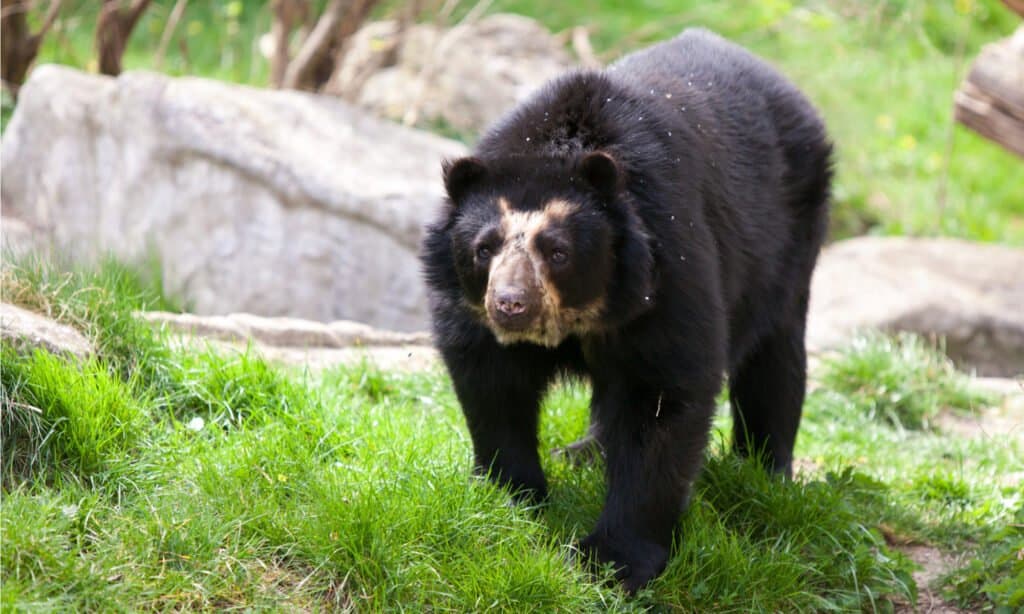
Spectacled bears are one of the animals now under threat in the Andes.
©Andrei Preda/Shutterstock.com
Unfortunately, many of the beautiful habitats in the Andes are now under threat, and there are several factors that are causing this. One of the main factors and one which influences most of the others is the increase in the population size of people living in the Andes. Increased population, as well as migration, causes an increase in the demand for food, water, energy, and even new transport links in the form of new roads. This then leads to deforestation which leads to habitat loss and subsequently causes many animals to become threatened. Deforestation and increased human presence especially threatens animals that live in the cloud forests of the Andes. This is because many of the animals which live there are endemic to those regions and once their populations are under threat there, they have nowhere else to go.
The increase in human presence is also leading to an increase in the amount of mining activity in the Andes. There is already a long history of mining in the Andes as it is a major source of copper, tin, gold, and silver. However, there has been an increase in the amount of mining in recent years. This leads to further habitat loss as well as the pollution of both soil and water sources.
Mid-Ocean Ridge System
Although the Andes mountains are considered the largest mountain range, if submarine mountain ranges are included, then the longest mountain range is the mid-ocean ridge system. The mid-ocean ridge system is a sea floor mountain system that stretches for an incredible 40,000 miles across the sea floor. It rises to 6,600 feet above the deepest part of the ocean basin.
The mid-ocean ridge system is part of every ocean in the world and marks the boundaries of the oceanic plates. The tectonic plates spread apart and form a giant rift valley on the sea floor. As the tectonic plates separate, molten rock erupts through to the sea floor. The molten rock then cools and forms a new oceanic crust in the shape of massive ridges. In fact, the mid-ocean ridge is essentially a series of underwater volcanoes.
The photo featured at the top of this post is © DaryaU/Shutterstock.com
Thank you for reading! Have some feedback for us? Contact the AZ Animals editorial team.




